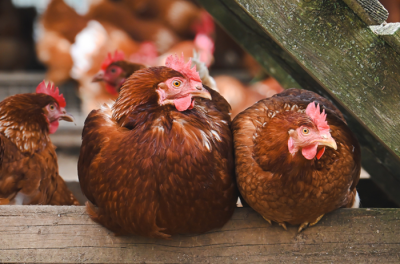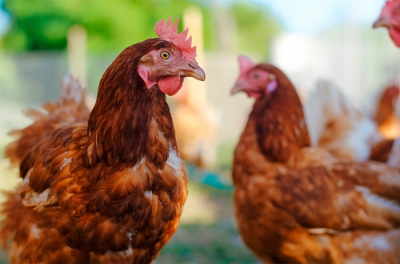

Prevention and Management of Slow Growth in Poultry
In broiler production systems, growth rate and consistency are key performance indicators for evaluating husbandry management success. Slow growth cases lead to prolonged rearing periods, feed inefficiency, increased feed conversion ratio (FCR), and economic losses due to underweight birds at harvest. Therefore, identifying the underlying causes and implementing appropriate interventions are critical to maintaining broiler health and performance.
Slow growth can be attributed to both infectious and non-infectious factors. Infectious causes include exposure to viruses, bacteria, mycoplasma, and parasites. Non-infectious factors encompass day-old chick (DOC) quality, management practices, nutrition and feed, and environmental stressors.
Preventive measures against slow growth involve attention to several key aspects, including:
Optimal Selection and Handling of DOCs
- Utilize DOCs with ideal body weight, active behavior, and free from physical deformities.
- Ensure chicks originate from breeders with proper vaccination histories and optimal health status.
Brooding and Environmental Management
- Maintain initial brooding temperatures around 32–34°C, with gradual adjustments based on age.
- Ensure adequate ventilation to remove ammonia and maintain relative humidity between 50–70%.
- Adjust stocking density based on bird age and available space to prevent competition for feed.
Nutrition and Feeding
- Formulate feed in accordance with nutritional standards appropriate for each growth phase.
- Use high-quality feed ingredients free from mycotoxins.
- Supplement with enzymes, prebiotics, or probiotics to support gut health and nutrient absorption.
Water Quality
- Provide water that is pathogen-free, neutral in pH, and free from heavy metals.
- Routinely sanitize water lines to prevent biofilm formation.
Biosecurity and Vaccination
- Implement strict biosecurity protocols (clean-dirty zones, disinfection, traffic control).
- Vaccinate breeder flocks and DOCs against major pathogens to ensure early protection.
Stress Management
- Minimize stressors such as excessive noise, light fluctuations, and rough handling.
- Ensure transportation and environmental transitions are managed with minimal stress impact.
When slow growth is identified, the following steps need to be taken immediately:
Veterinary Diagnostics
- Conduct laboratory testing to identify infectious agents through PCR, serology, or histopathology.
- Assess feed and water quality to eliminate potential contamination from mycotoxins or heavy metals.
Therapeutic and Supplementary Interventions
- Apply targeted therapies based on diagnostic results, including antibiotics for secondary infections and mycotoxin binders if required.
- Provide metabolic support through supplementation with essential vitamins, minerals, and amino acids.
Environmental and Management Improvements
- Enhance ventilation and optimize house temperature and lighting conditions.
- Adjust stocking density to reduce social stress and improve feed access.
Monitoring and Evaluation
- Implement stringent monitoring of daily growth, feed intake, and mortality rates.
- Utilize performance data to evaluate the effectiveness of interventions and refine strategies as needed.
Slow growth in broilers presents a multifactorial challenge requiring a holistic approach. Prevention through the selection of high-quality DOCs, optimal management practices, provision of premium feed and water, and appropriate vaccination is paramount. Once slow growth is identified, accurate diagnosis and integrated interventions across health, nutrition, and environmental domains are essential. With the right strategies, broiler performance can be restored, ensuring sustained farm productivity.
You may also like

Probiotic to Optimize Egg Production and Improve t...
In the poultry industry, production efficiency is...

Probiotics’ Impact on Lowering Ammonia Levels and...
Air quality within poultry houses is a crucial fac...

The Role of Prebiotics in Supporting Gut-Associate...
Gut-Associated Lymphoid Tissue (GALT) is the large...